Abstract
The monohydroxylation of halobenzenes by phenobarbital-induced rat liver microsomes was studied. The p-halophenol was found to be the major metabolite from all four halobenzenes; o-halophenol formation decreased as the halogen atom size increased. Vmax for total hydroxylation (ortho and para products) correlated well with the sigma + Hammett constant with a negative rho value. This implies a positively charged intermediate in the rate-determining step. Vmax for either ortho or para hydroxylation alone did not correlate with a Hammett constant, implying that the product-determining step occurs after the rate-determining step. Rate-determining formation of a radical cation intermediate is postulated to explain this data.
Full text
PDF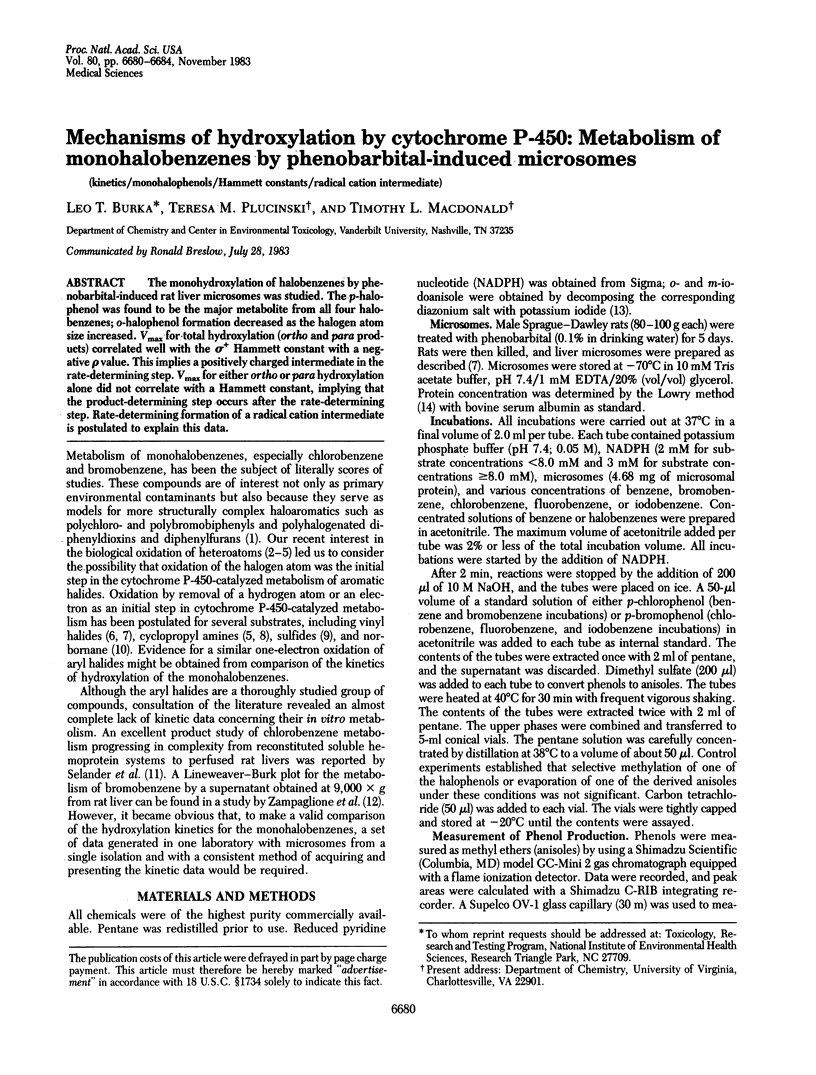
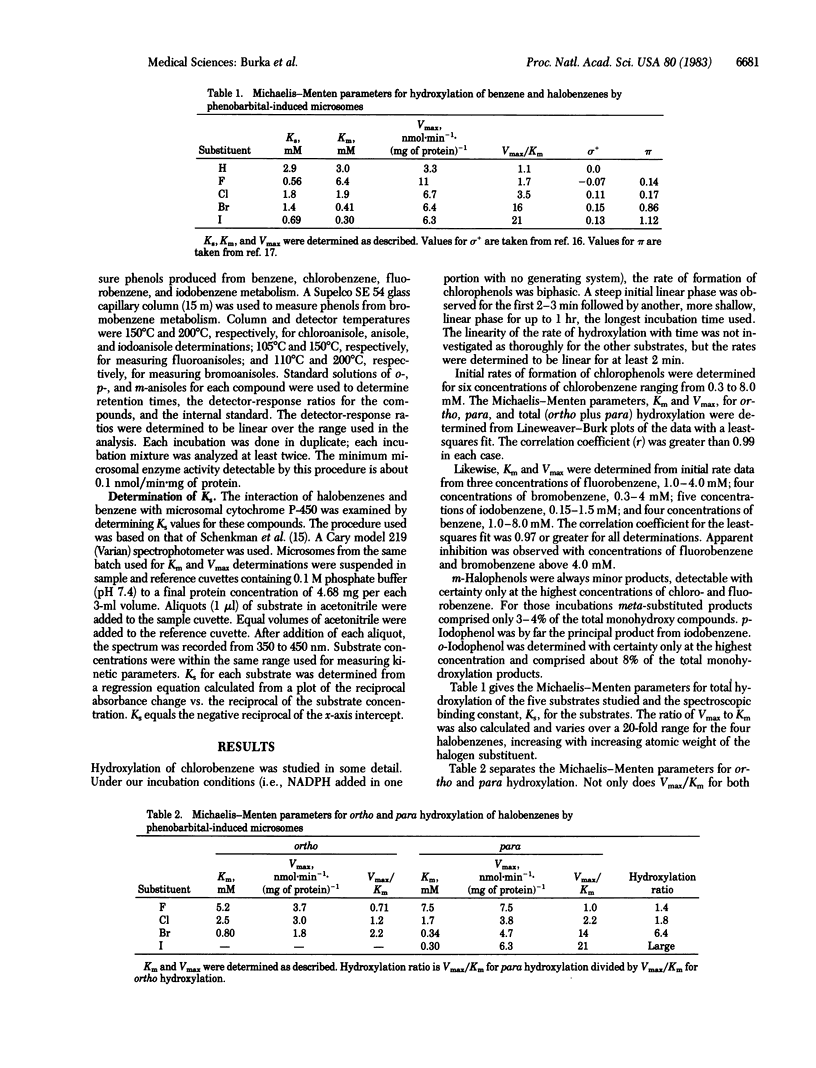
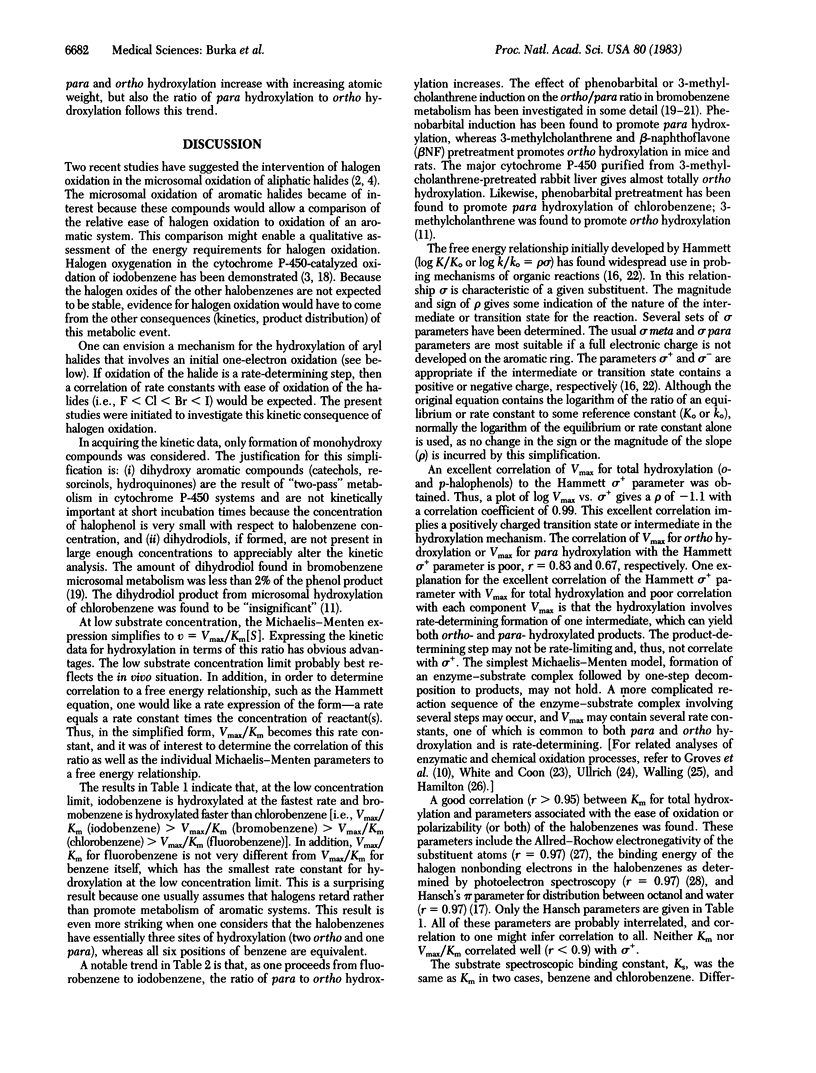
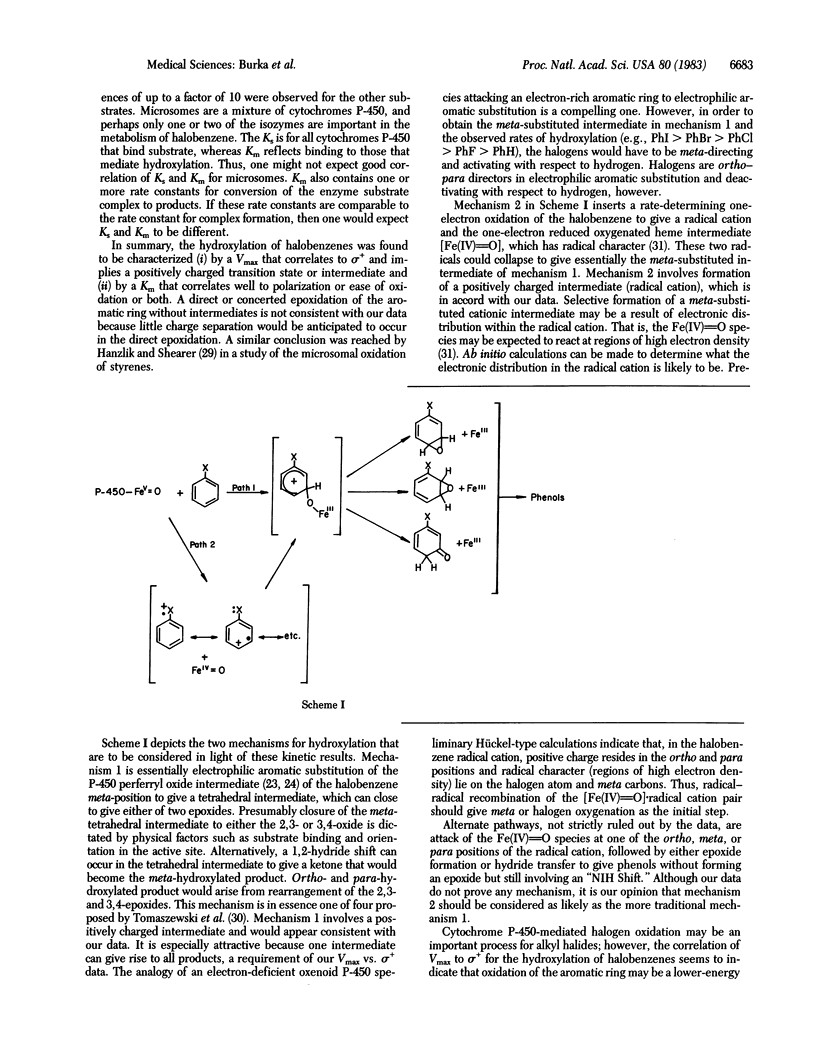
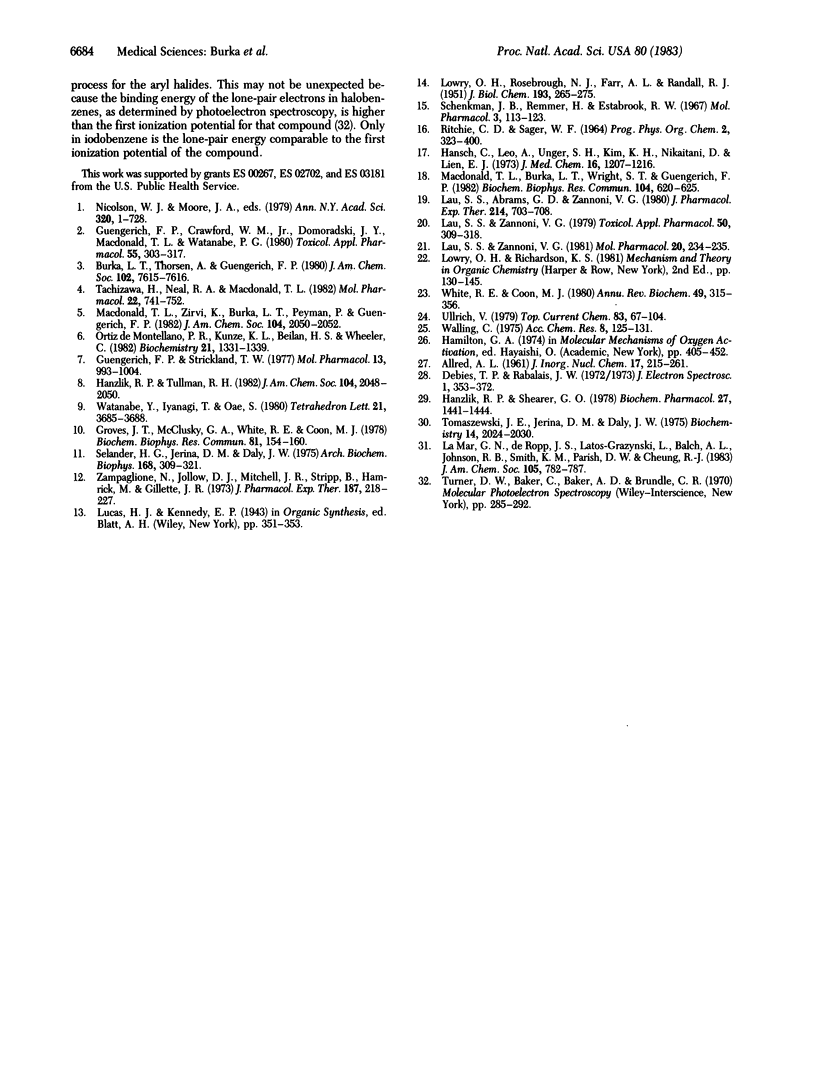
Selected References
These references are in PubMed. This may not be the complete list of references from this article.
- Groves J. T., McClusky G. A. Aliphatic hydroxylation by highly purified liver microsomal cytochrome P-450. Evidence for a carbon radical intermediate. Biochem Biophys Res Commun. 1978 Mar 15;81(1):154–160. doi: 10.1016/0006-291x(78)91643-1. [DOI] [PubMed] [Google Scholar]
- Guengerich F. P., Crawford W. M., Jr, Domoradzki J. Y., Macdonald T. L., Watanabe P. G. In vitro activation of 1,2-dichloroethane by microsomal and cytosolic enzymes. Toxicol Appl Pharmacol. 1980 Sep 15;55(2):303–317. doi: 10.1016/0041-008x(80)90092-7. [DOI] [PubMed] [Google Scholar]
- Guengerich F. P., Strickland T. W. Metabolism of vinyl chloride: destruction of the heme of highly purified liver Microsomal cytochrome P-450 by a metabolite. Mol Pharmacol. 1977 Nov;13(6):993–1004. [PubMed] [Google Scholar]
- Hansch C., Leo A., Unger S. H., Kim K. H., Nikaitani D., Lien E. J. "Aromatic" substituent constants for structure-activity correlations. J Med Chem. 1973 Nov;16(11):1207–1216. doi: 10.1021/jm00269a003. [DOI] [PubMed] [Google Scholar]
- Hanzlik R. P., Shearer G. O. Secondary deuterium isotope effects on olefin epoxidation by cytochrome P-450. Biochem Pharmacol. 1978 May 15;27(10):1441–1444. doi: 10.1016/0006-2952(78)90099-0. [DOI] [PubMed] [Google Scholar]
- LOWRY O. H., ROSEBROUGH N. J., FARR A. L., RANDALL R. J. Protein measurement with the Folin phenol reagent. J Biol Chem. 1951 Nov;193(1):265–275. [PubMed] [Google Scholar]
- Lau S. S., Abrams G. D., Zannoni V. G. Metabolic activation and detoxification of bromobenzene leading to cytotoxicity. J Pharmacol Exp Ther. 1980 Sep;214(3):703–708. [PubMed] [Google Scholar]
- Lau S. S., Zannoni V. G. Bromobenzene metabolism in the rabbit: specific forms of cytochrome P-450 involved in 2,3- and 3,4-epoxidation. Mol Pharmacol. 1981 Jul;20(1):234–235. [PubMed] [Google Scholar]
- Lau S. S., Zannoni V. G. Hepatic microsomal epoxidation of bromobenzene to phenols and its toxicological implication. Toxicol Appl Pharmacol. 1979 Sep 15;50(2):309–318. doi: 10.1016/0041-008x(79)90156-x. [DOI] [PubMed] [Google Scholar]
- Macdonald T. L., Burka L. T., Wright S. T., Guengerich F. P. Mechanisms of hydroxylation by cytochrome P-450: exchange of iron-oxygen intermediates with water. Biochem Biophys Res Commun. 1982 Jan 29;104(2):620–625. doi: 10.1016/0006-291x(82)90682-9. [DOI] [PubMed] [Google Scholar]
- Ortiz de Montellano P. R., Kunze K. L., Beilan H. S., Wheeler C. Destruction of cytochrome P-450 by vinyl fluoride, fluroxene, and acetylene. Evidence for a radical intermediate in olefin oxidation. Biochemistry. 1982 Mar 16;21(6):1331–1339. doi: 10.1021/bi00535a035. [DOI] [PubMed] [Google Scholar]
- Selander H. G., Jerina D. M., Daly J. W. Metobolism of chlorobenzene with hepatic microsomes and solubilized cytochrome P-450 systems. Arch Biochem Biophys. 1975 May;168(1):309–321. doi: 10.1016/0003-9861(75)90255-6. [DOI] [PubMed] [Google Scholar]
- Tomaszewski J. E., Jerina D. M., Daly J. W. Deuterium isotope effects during formation of phenols by hepatic monoxygenases. Evidence for an alternative to arene oxide pathway. Biochemistry. 1975 May 6;14(9):2024–2031. doi: 10.1021/bi00680a033. [DOI] [PubMed] [Google Scholar]
- Ullrich V. Cytochrome P450 and biological hydroxylation reactions. Top Curr Chem. 1979;83:67–104. doi: 10.1007/BFb0019663. [DOI] [PubMed] [Google Scholar]
- White R. E., Coon M. J. Oxygen activation by cytochrome P-450. Annu Rev Biochem. 1980;49:315–356. doi: 10.1146/annurev.bi.49.070180.001531. [DOI] [PubMed] [Google Scholar]
- Zampaglione N., Jollow D. J., Mitchell J. R., Stripp B., Hamrick M., Gillette J. R. Role of detoxifying enzymes in bromobenzene-induced liver necrosis. J Pharmacol Exp Ther. 1973 Oct;187(1):218–227. [PubMed] [Google Scholar]


